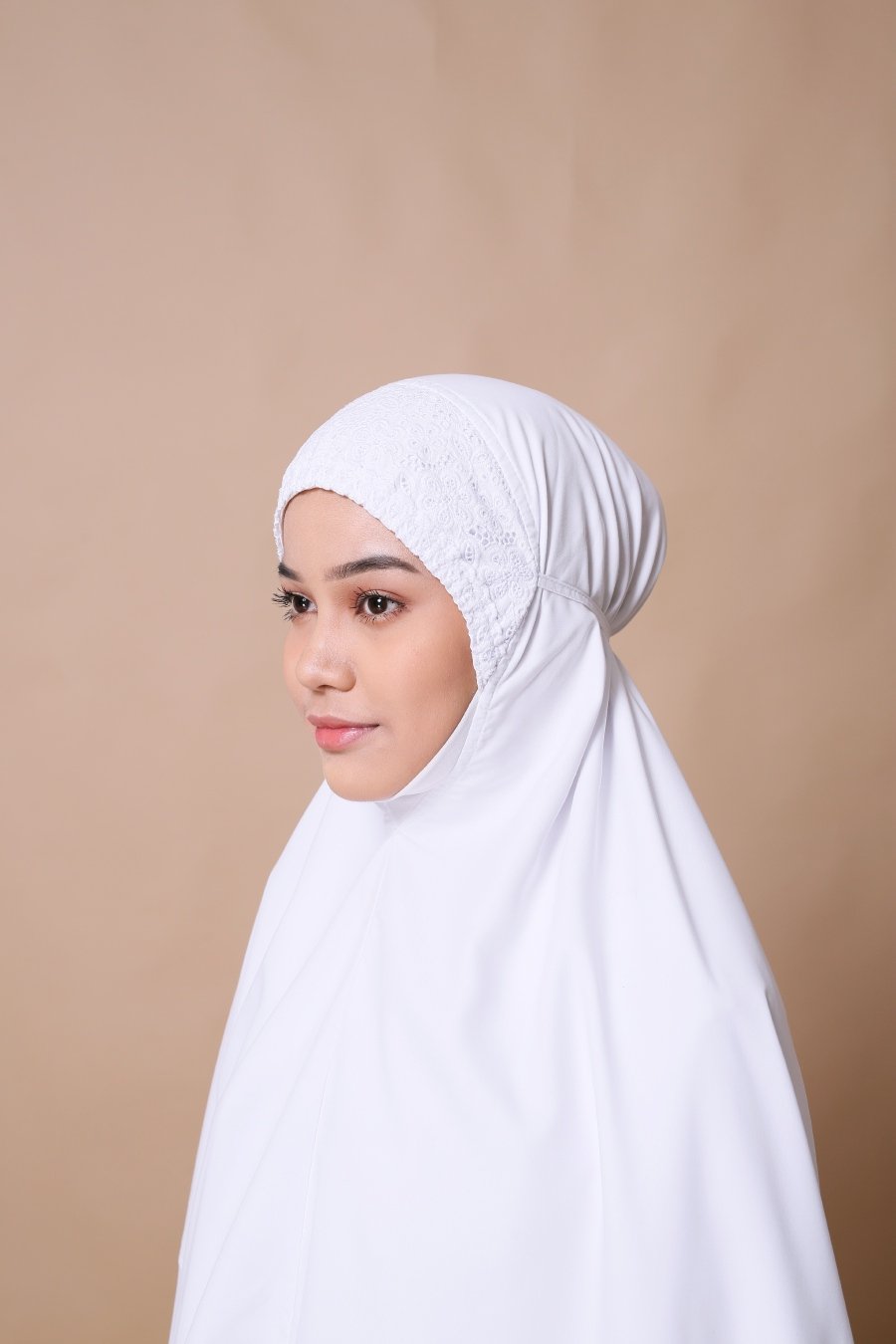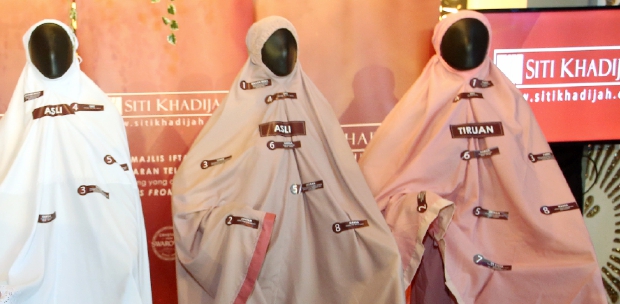Fabric development and customer demand has fuelled the innovation of the telekung.
JUST a decade ago, the telekung or the Muslimah prayer robe, was basic in every sense of the word — at least where the Malaysian market was concerned. The fabrics it came in were cotton or polyester, the colour white and it had few or no embroidery. What was important was that the telekung covered the aurah (the parts of the human body which must be covered by clothing) when women pray.
It was never about beauty or style.
But much like other clothing articles for Muslim women – like the tudung (head scarf) and jubah – the telekung too has gone through changes in recent years. Fabric technology and design have changed the way many Muslim women view the telekung now.
Telekung had no brand names in the past, but there are many telekung labels now and customers are spoilt for choice. They can choose from telekung made of silk, cotton lycra, cotton polyester and satin silk. Many brands have details such as telekung with zipped pockets, sleeves and two-in-one functions – such as tudung and telekung in one piece.
The market has become competitive as brands launch every design and colours imaginable for telekung.
Leading the telekung innovation in the country is Telekung Siti Khadijah. With its tagline "Lebih daripada sekadar telekung" (More than just telekung), the brand has elevated the status of the prayer attire since it launched its first design in 2009. These days, most consumers link designer telekung with the brand.
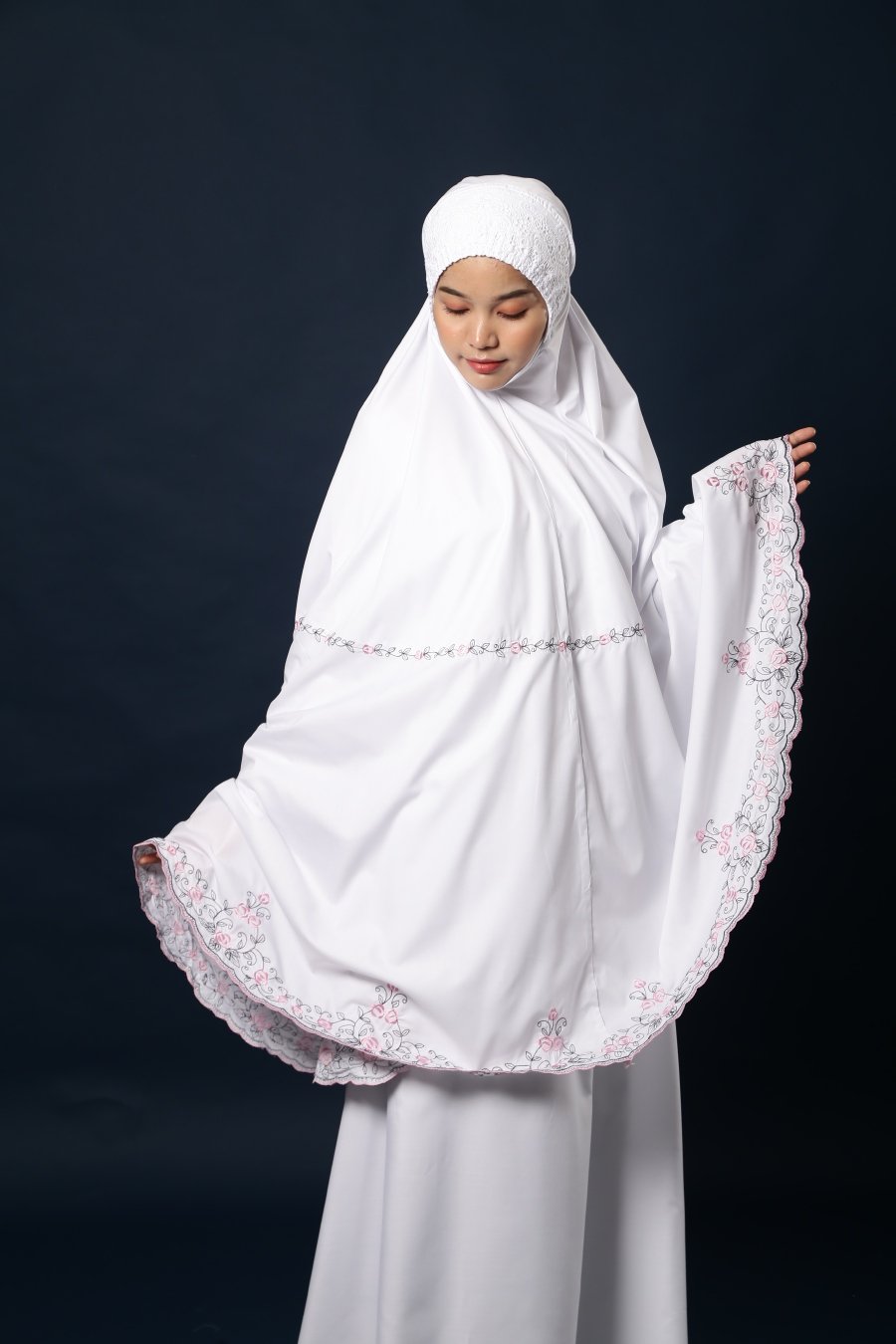
Its group executive chairman Aminuddin Mohd Nasir says it is the brand’s aim to transform the image of the telekung when it launched its first design. The innovation in Siti Khadijah telekung -- an elastic loop to fit the face- - has changed the perception that telekung design is not refined. Women now look for telekung that gives them not only comfort but also beauty.
“Initially, people thought that we had changed the cut or style but it is still the same shape. The major difference is in the face design. We knew we could improve the telekung design. We created the face design to benefit women and they realised that our telekung is designed to cover the hair without having to wear an inner cover.”
“We use spun polyester, which is a softer and lighter fabric, and more comfortable. In addition, the lining covers the wearer from head to chest.”
INNOVATIVE TECHNIQUES
People choose Siti Khadijah because the products are innovative and are made with techniques that the brand invented.
Others may try to copy its innovation but they won't be able to get it completely right. Siti Khadijah products go through research and development. The brand employs staff who are experts in different aspects of production.
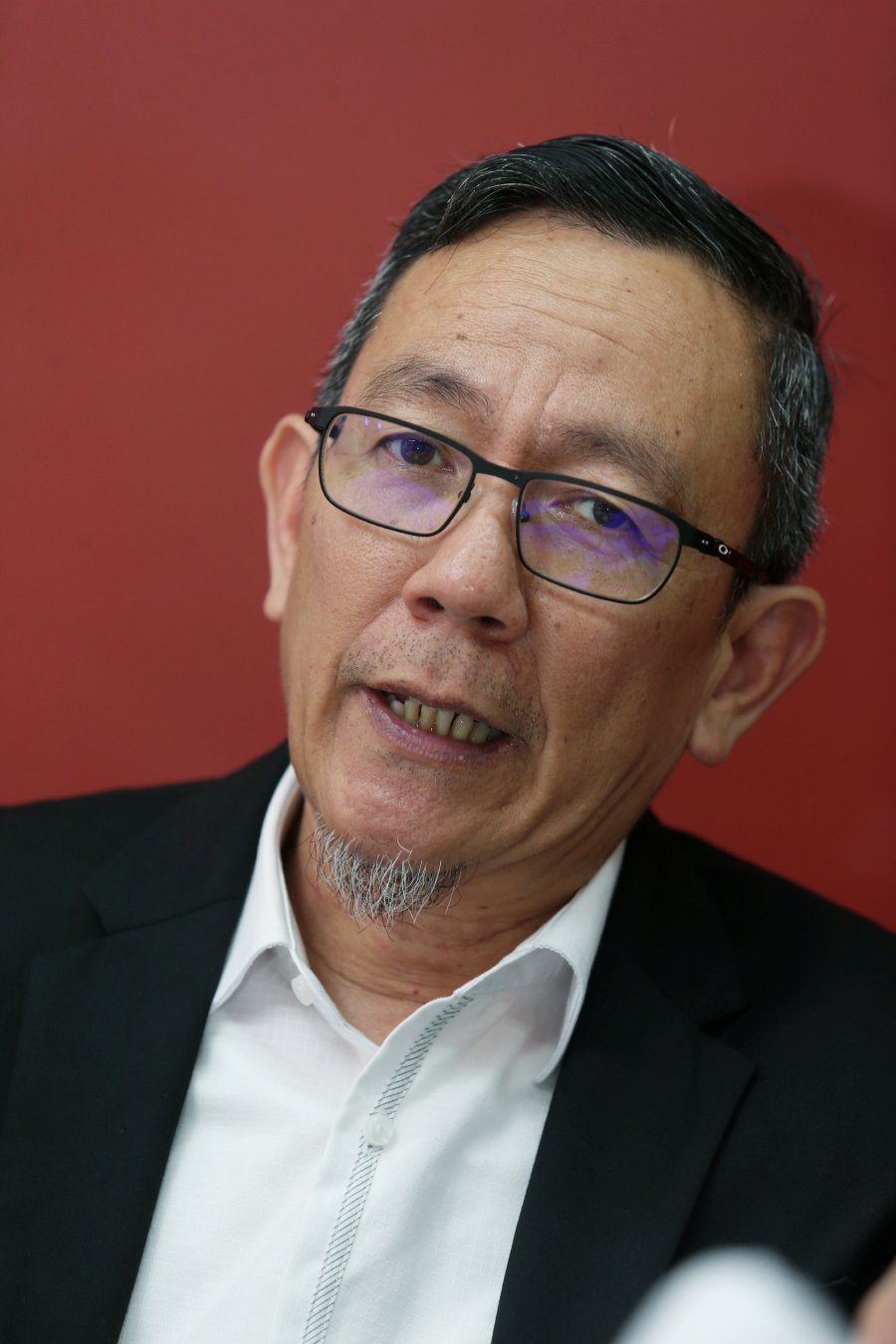
The telekung is not about fashion but women still want to look and feel good when they wear it. They buy designer telekung because they want quality, creativity and exclusivity.
“Technology and lifestyle change mean people will upgrade everything, such as phones, cars, shoes and bags. So why should the the telekung be excluded?
“If we can make telekung more comfortable and practical, we will do it, as long as the innovation is syariah-compliant. We will continue to look for other innovative techniques or designs including improving the face design,” adds Aminuddin.
The face design is registered with MyIPO under industrial design. The brand has launched four collections - Original, Classic, Modern and Harmony - all in white.The special edition Prayer Outfit is available in pink, almond and grey. Telekung prices range from RM150 to RM380.
When they set up Telekung Tea (Tea stands for Telekung Era Alem) in 2013, Ahmad Aiman Che Ghani and Areej Torla knew that they had to ensure that theirs was different.
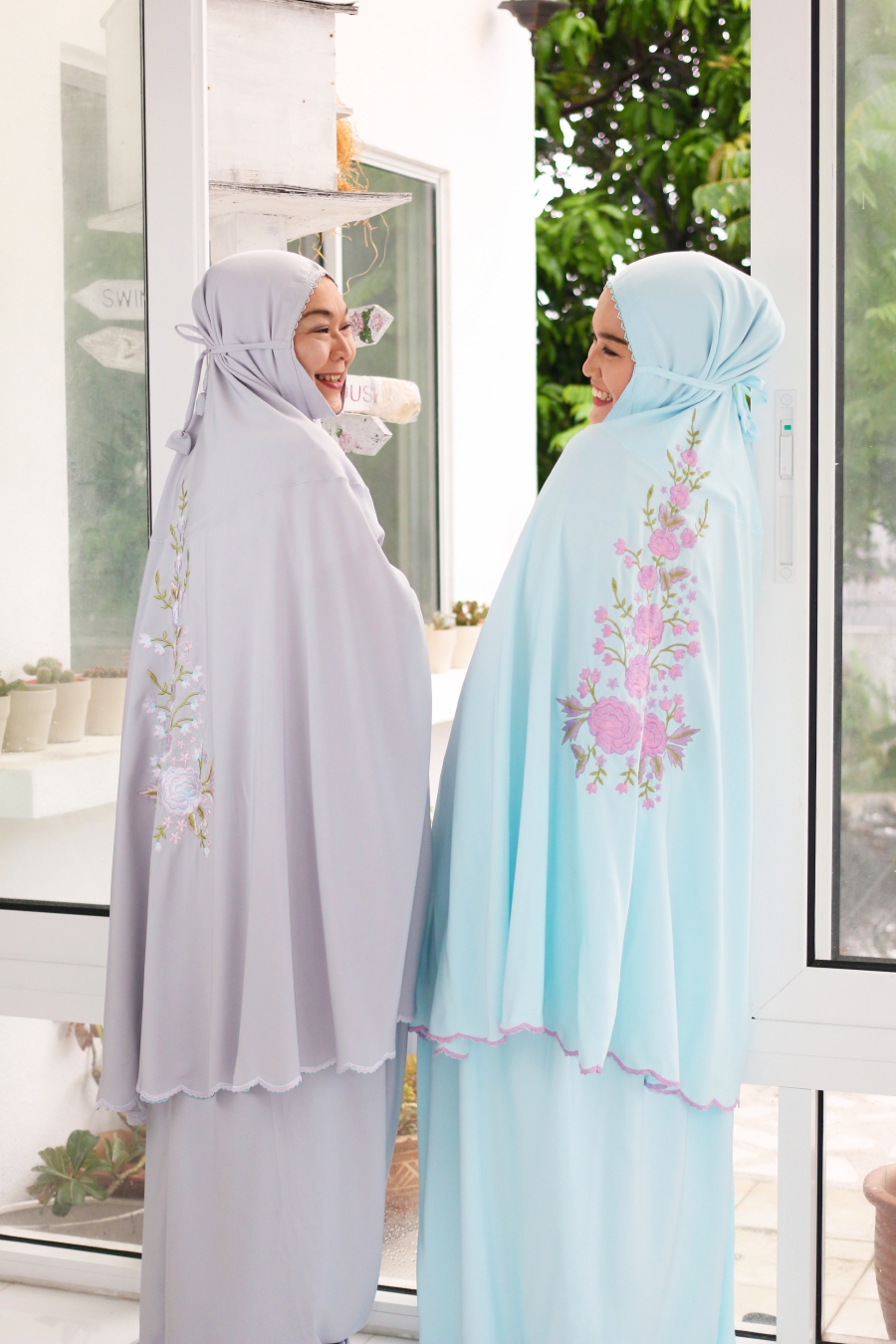
The husband-and-wife team offered telekung with fine embroidery around the hem, neck and the edge of the sarong. They also use special smocking techniques for the head band that is sewn with lace and a stretchable chin strap. Other features include broderie anglaise, embroidered florals with eyelet and rhinestone.
Areej, who is creative director, says embroidery is also Telekung Tea's trademark because it is not patched on or sewn around the border. It is stitched onto the fabric by skilled workers in Indonesia.
“The telekung is made from our signature fabric -- rosella premium. The material is soft, cooling and wrinkle-resistant. It is provided exclusively to us by our supplier as many have tried to copy our telekung.”
BE DIFFERENT
Aiman says when Telekung Tea came up with its first product five years ago, other than Siti Khadijah, there were only a few local brands that made their own telekung. Other brands brought in telekung from Indonesia and Vietnam and branded them with their labels.

“It was a challenge for us because Siti Khadijah had set the benchmark for innovative telekung. We needed to stand out. Our first product boasted colour blocking and it sold out. We realised then that people like colourful telekung. So we introduced more designs in vibrant colours including pink, blue, peach, green, purple and grey.
“Since then our brand has made various changes to meet demand. We have to be innovative and fulfil people’s need to own a telekung that is different from others - whether in terms of fabric, colour or design. Our design team and skilled craftsmen continue to create telekung designs with a fusion of traditional and contemporary elements.”
Another Telekung Tea strategy is to market the telekung as a gift, which no other brand is doing. They got the idea when customers asked for beautiful telekung designs as gifts or for weddings.
To make it more exclusive, they provide customers with gift boxes, fancy paper bags, ribbons, tags and gift cards for every occasion.
“People always want to wear beautiful clothes and accessories and we want to meet demand. It is not wrong if you want to look nice and beautiful when you pray.”
For Aiman, the competitive market prompts Telekung Tea to continue being innovative.
“People will notice the difference between our brand and others.”
The brand has introduced various telekung lines - Tea Limited, Tea Premium, Tea Omra, Tea Basic, Tea Kids and Tea Travel. Each collection has a limited quantity to maintain exclusivity, with prices between RM300 and RM1,000.

Local label The dUCk Group has also ventured into telekung with its sell-out Tweed Telekung with tweed hem in muted shades like white, light brown and black. The sarong has pockets for car keys and cash. The latest edition also comes with a small, quilted prayer mat. It’s still a small segment for the company which mostly sells scarves but the demand is growing, especially among its fans, known as dUCkies.
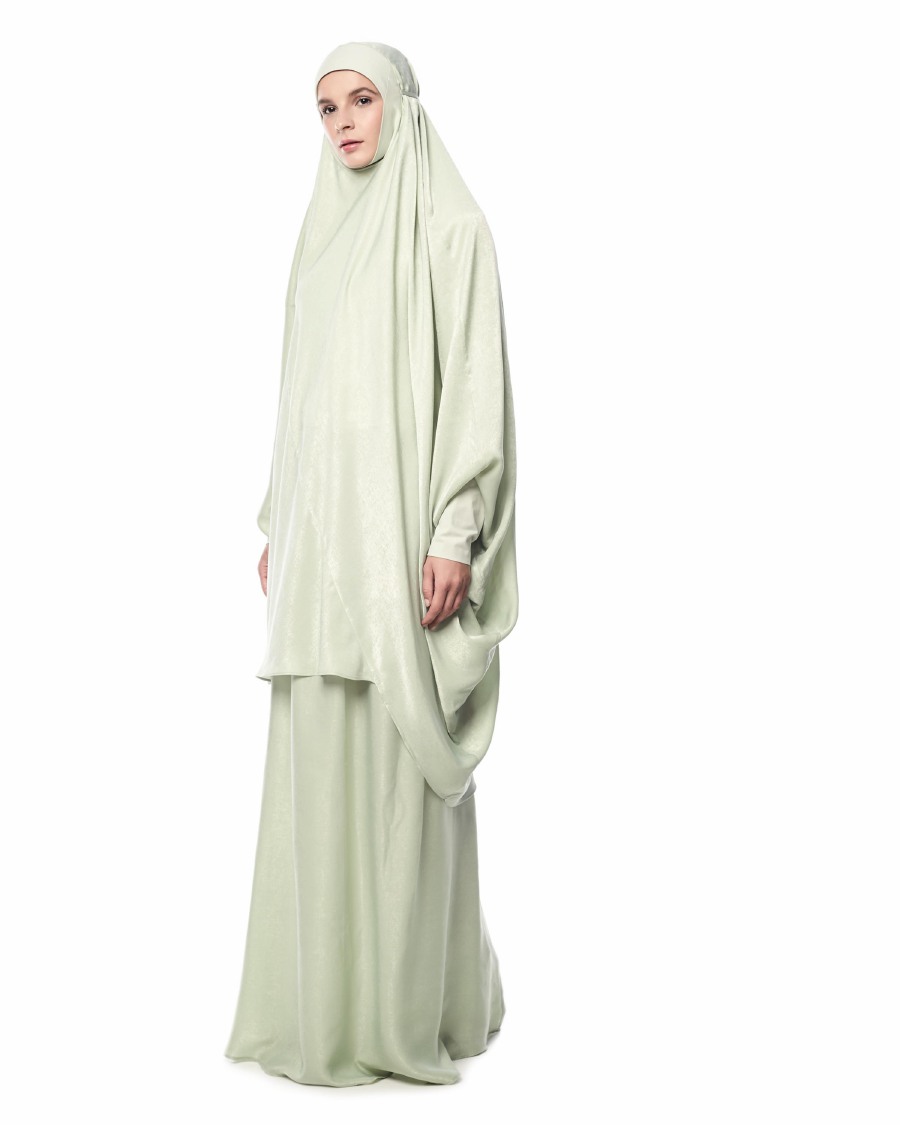
With other brands like Naelofar, Ariani and Blancheur offering premium prayer robes, the options are growing and Muslim women have the option to upgrade their telekung or choose the regular, non-branded versions commonly sold at Wisma Yakin on Jalan Tuanku Abdul Rahman.
INNOVATIVE PRAYER MATS
THE prayer mat has also become more innovative in terms of fabric and design. The regular prayer mats were made from cloth or rugs with basic designs of minarets, floral images and arched doorways. Now, there are those made from silk, cotton or wool.
Here are some of the innovative prayer mats in the market :
1. SAJADA PORTHOPEDIC
Launched by three Malaysians and created especially for people who suffer from back, knees and heel pain, this prayer mat is made from Acrylonitrile Butadiene rubber foam that can absorb pressure up to 300kg. It is 15mm thick, making it thicker than the normal prayer mat which is less painful on the knees when performing prayers. Available at https://sajada.my
2. TIMEZ5
Nader Sabry, a Canadian Muslim, invented the world’s first physiological prayer mat made with components derived from space technology.
This prayer mat – Timez5 – has a five-layer system designed to help people with knee and joint pain, fatigue, body stiffnes and, low energy, and it also supports the muscular skeletal structure of the body. (https://www.timez5.com)
3. NAELOFAR SAJADA
These prayers mats are made from a soft velvet effect fabric with two designs to choose from. The Sajada Khadija design is contemporary with designs of leaves and multi-shaded flowers while Sajada Aisya is traditional, with details including a border running along the edge and a garland of flowers in the middle. (https://www.naelofar.com)
4. MY SALAH MAT
Designed to educate children on how to perform prayers in a fun and enjoyable way, this interactive prayer mat is touch sensitive and has pre-recorded keys that can be touched to release sound, such as prayer times, the Quran and du’a. It also teaches the different prayer times and the various bodily movements and positions, and what to recite during prayers. (https://www.mysalahmat.com)


